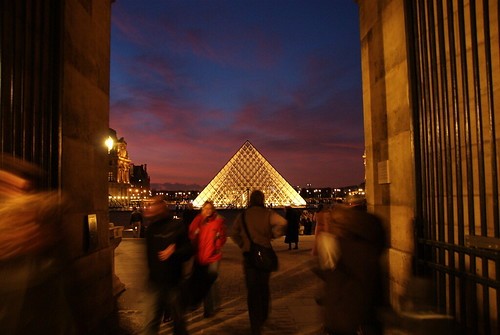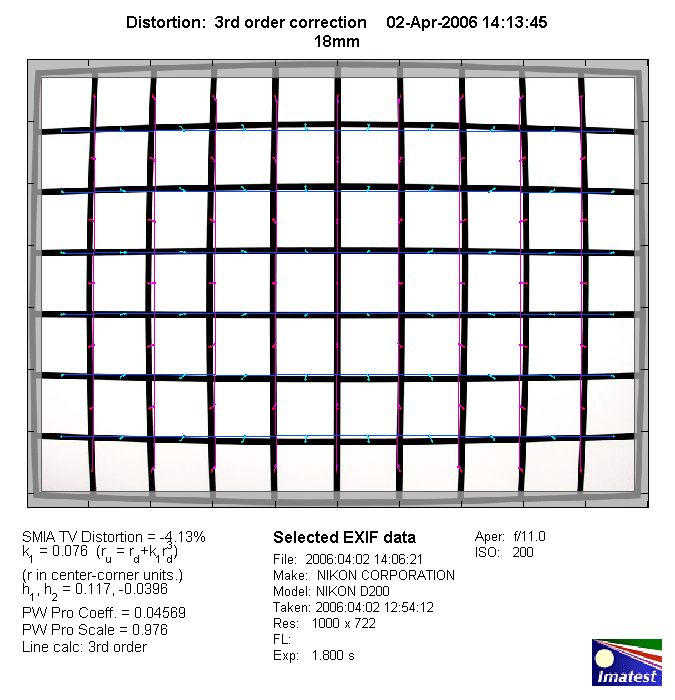Hey Garbz!

I'll share a few thoughts:
1. For portraits you want low apertures, which the 18-200 doesn't offer.
Maybe you enjoy having all your shots at apertures other than F/3.5 but I vary anywhere between F/1.4 to F/22 and I would say that for me, 60% of the time I am above F/5.6. This is not a technical issue, this is by conscious choice. Sometimes I want that 2" DOF, other times I do not. I am not saying that the 18-200 is the world's greatest portrait lens, but for 90% of the kind of people who are going to get this lens, this is not going to be an issue. More importantly would be the VR which most newer users *will* use and benefit from. I know that until I got my technique down, VR saved my butt many times and gave me shots that I would not have had with it turned off.
2. For Landscapes you want sharp pictures and low distortion, which the 18-200 definitely doesn't offer. (shooting at 18mm is like looking through a fishbowl).
Sharpness is *not* an issue. For landscapes you want small apertures for a deep DOF. As mentioned, at higher numerical apertures, this lens is as sharp as a 70-200, as proven by a past thread I saw here on TPF about 2 years ago. Distortion? Yeah, plenty, but for a lens with an 18-200, it still distorts less than the competition's superzoom, by a good margin too.
- The least sharp solution
As mentioned, it's poor at wider apertures, better opened up and we always can sharpen in post... non-issue, IMHO.
Vignetting is bad at the low end of the zoom range
The vaunted 70-200 vignetts more up top on my D700 than a 18-200 on a D200. Again, addressable in post process in under 2 seconds... non-issue, IMHO.
Distortions are definitely field relevant and correcting in photoshop drops your field of view to 24-28mm on the wide side.
Keeping in mind that a professional or advanced amateur is not going to use this lens for paid work and that the average person who buys this lens will barely see it and even if the see it, it is again, correctable in post... makes it a non-issue for the vast majority of users who will purchase this lens.
The construction is nasty and the lens is nasty to use.
"Nasty" is more opinion than fact. I will say that this lens is lower on the scale of construction quality or durability than I would want, but it is not a $2000 lens and to expect "top notch" quality in a superzoom which is made for people who want convenience over quality is not realistic. If you want real construction issues, look at the Sigma 18-200, now *that* is garbage!
Zooming especially the lens flows too freely through the 30-130mm range and then needs to be forced to the 200mm point.
Ok, this I would have to say is specific to your lens. I have no such needs to force anything on my lens from 18-200, never had to, either. Yes, there is a light increase in torque needed to twist the zoom past the 30mm range, but for me it is consistent from 30 all the way to the end (200mm). This feeling was exactly the same as the one that I tested on before I bought the lens, and it acted identically to the one that I bought. Does this affect the lens in any negative manner or remove from the results? Not at all.

The lens creeps. This may sound like something minor but it is a major nuisance
Yes, it does creep... but has an easy fix... zoom to 18mm... "problem" solved. Set at 18mm, I can have my lens pointing down for hours and it will not creep... I tested this and I know that this works on mine, one other user I know personally and at least 20 people online that I read have successfully tested this.
The front element extends more than 10cm from the camera and wobbles.
Wow, when I read that, I pulled it out again and tested it. Yes, this would have bothered me a lot... but sincerely, I have no wobble, nothing, not even a hair.I thought it may have been because I did not have it on camera, so I slapped it on the D200. Garbz, no kidding, mine doesn't do this at all. I'll have to say that this has to be something particular to your copy and I would suggest that others that have this lens check this out. If it does wobble, send it in for repair or exchange it.
Because of this extension I would not want to ever drop or bump this lens against anything. It would snap in half.
That is just basic care. My 24-70 extends and I would not want to bump it... the 14-24 has a bulbuous front element that cannot support a protective filter... both are ~$2000 lenses. Because I also would not want to even lightly bump it, doesn't make it a bad lens, and it doesn't make the 18-200 lens a worse lens than others. It is a trait and if that means that one needs to take special care to not drop it (I would not want t drop *any* lens, thanks... lol), so be it. I've bumped pretty hard it a few times into walls at full extention, but it still works today. I would not want to swing it like a baseball into the edge of a wall unless I wanted to make my lens into several useless chunks, though.
And because of the creep you'll find the lens is always at 200mm when the camera is dangling around your neck.
Already addressed with an easy fix... and if you want dangle... try hanging the camera around your neck with the 70-200... now that is dangle! :mrgreen:
Is that worth the inconvenience of spending 15 seconds changing lenses to you?
Definitely up to each person to make their own decisions, and I think that the info in this thread gives each potential purchaser a good level of info to make an educated choice.
Is the 18-200 for everyone? Heck no, it is basically a kit lens on steroids and gives more than decent results. It is sharp in the right hands and gives satisfying results to all but the more advanced users who's needs demand more. For those where quality is more important than convenience, this is
not the lens for you... but even someone like me with a D700 and a nice arsenal of pro-level lenses is going to prefer to take the D200 and 18-200 as my vacation or walk-around lens.
There is a lot to be said for convenience over ultimate quality at times!






![[No title]](/data/xfmg/thumbnail/31/31739-79afec4abf40a7270ab73b65a6bbf108.jpg?1734160457)



![[No title]](/data/xfmg/thumbnail/36/36302-6ee4929dfdf80290ffd73704693e860f.jpg?1734168631)





![[No title]](/data/xfmg/thumbnail/34/34040-14af4007923299ad46d35fc110d0faad.jpg?1734164446)